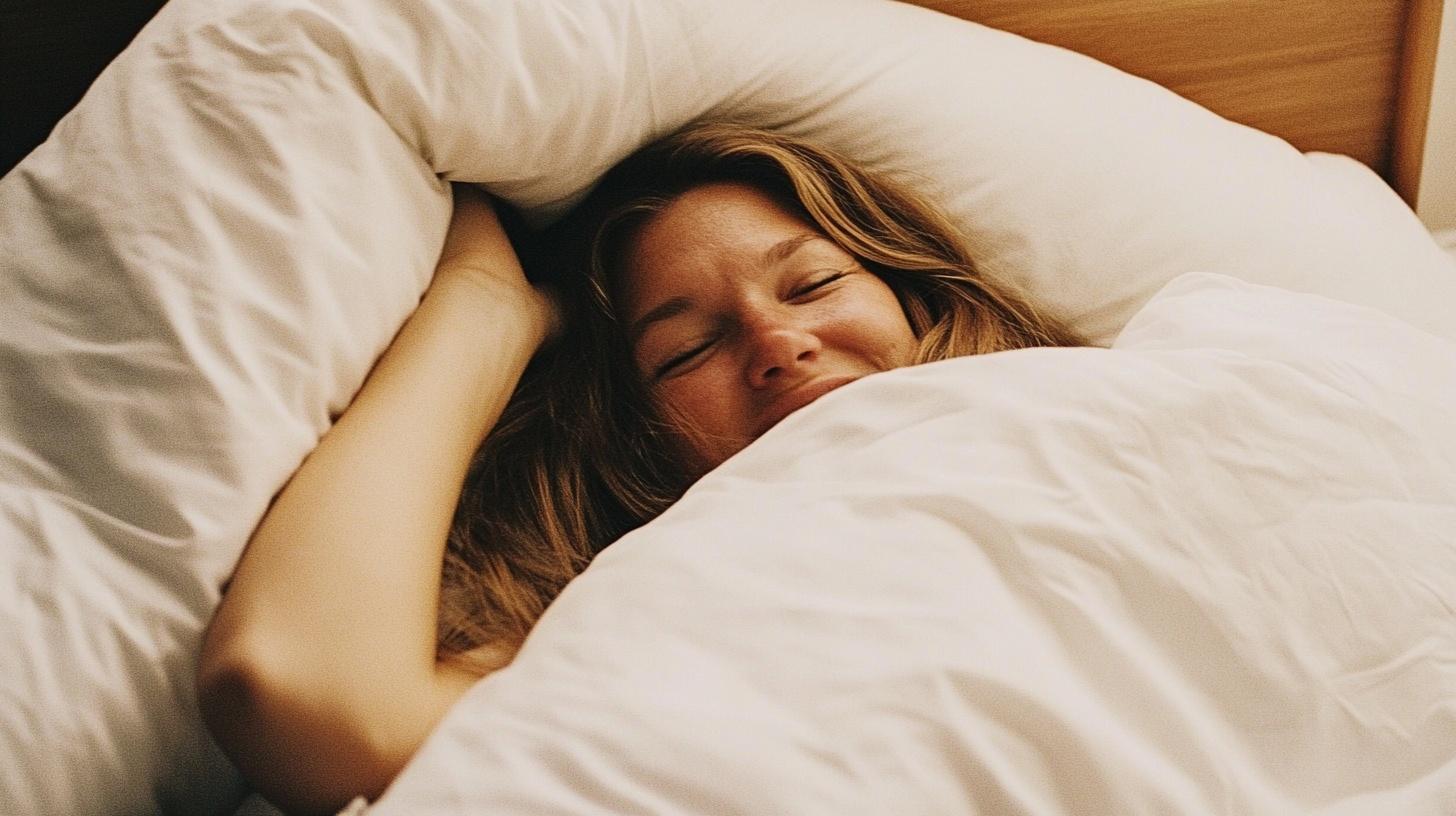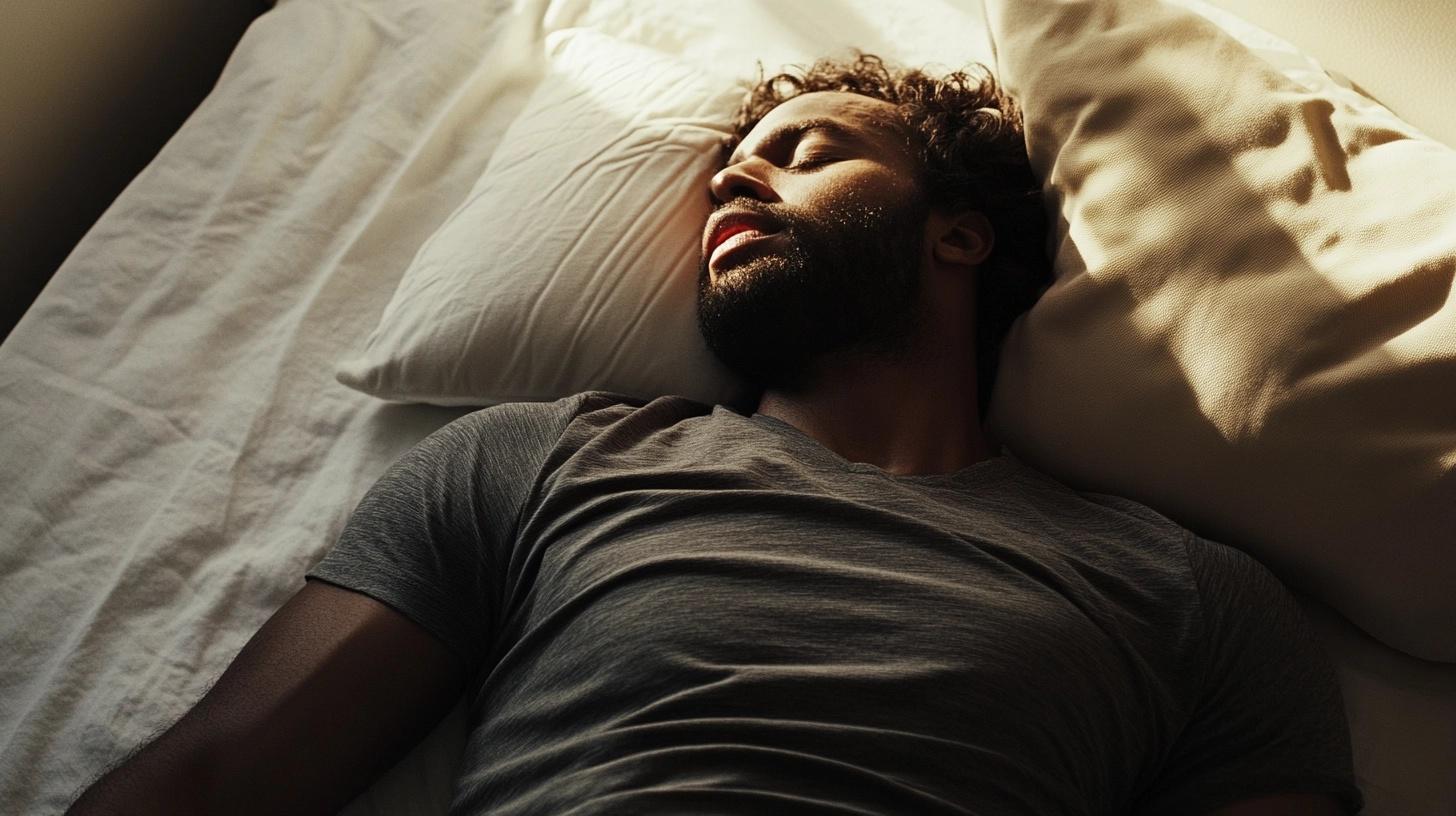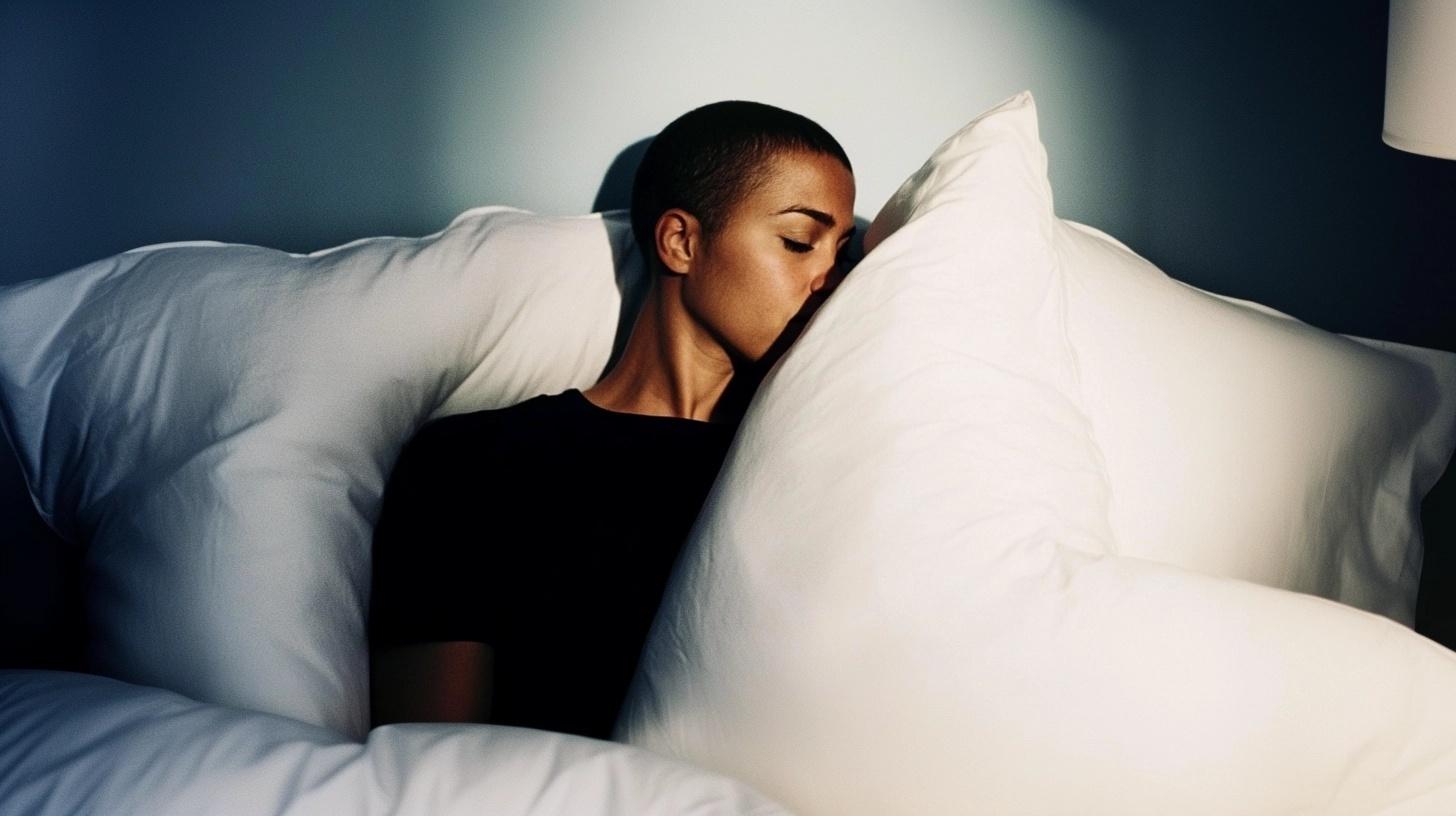Sleep Cycle's ‘Statistics’: How insight into your sleep statistics can help you sleep better
Published
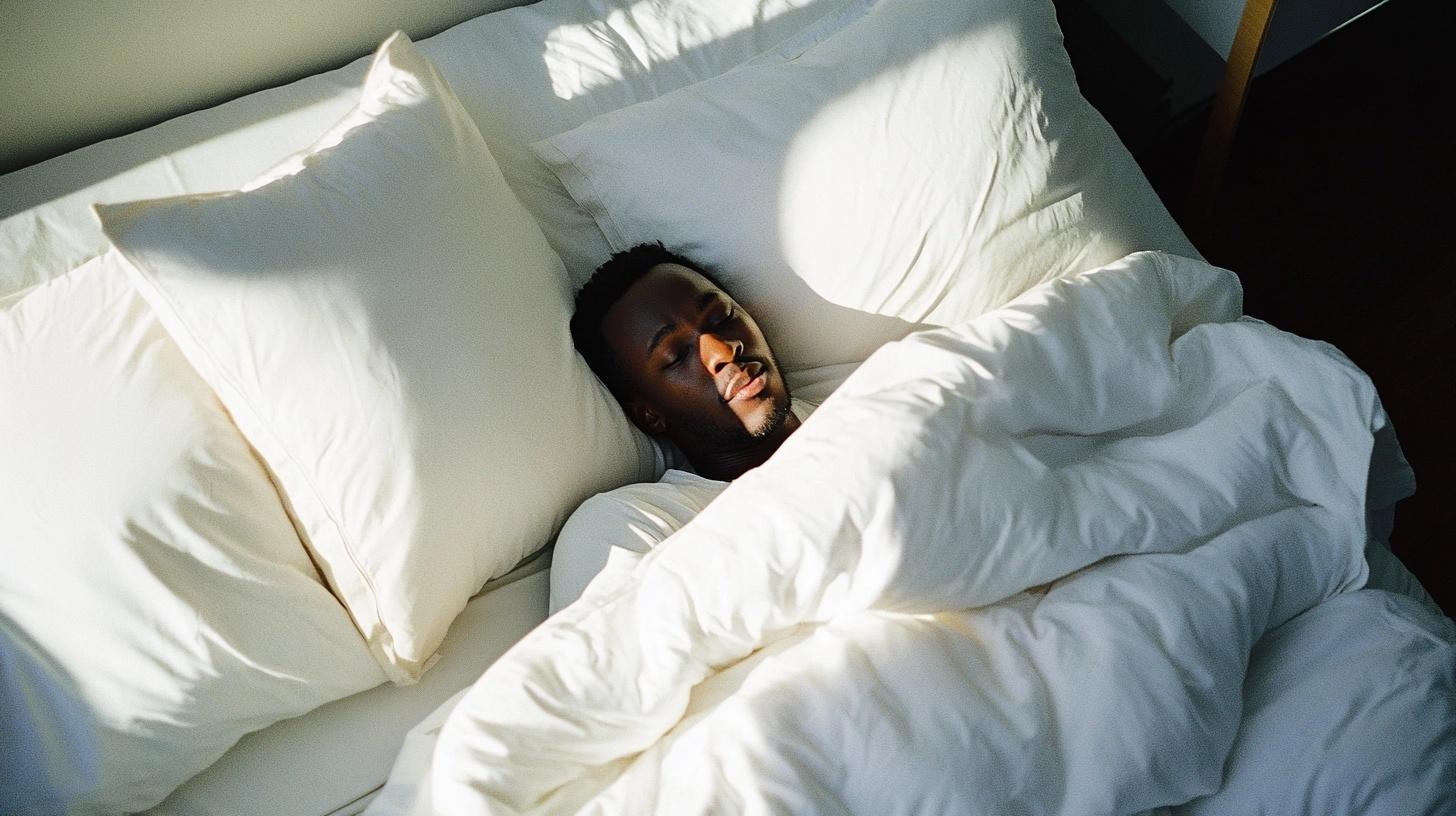
At Sleep Cycle, we’re passionate about sleep analysis and sharing insights with our users to help them improve their sleep. Showing tailored and detailed trends over a length of time in a form of a sleep diary is crucial to get a complete picture of your sleep health. This serves as a first step to improving your sleep and discovering what could be interfering with your sleep.
Get insights into your sleep. Start your free trial tonight.
Making sleep tracking effortless: Your new sleep diary explained
As a user, you can see your sleep analysis from the previous night each morning in your ‘Journal’ tab. From there you get a quick view of your previous night’s sleep. From your ‘Statistics’ tab, however, you can see all sleep stats over days, weeks, months and dating back from your first ever sleep with the app. Yes – your whole (automatic) sleep diary in just one tab.
Sleep Quality
Sleep Cycle uses an algorithm to analyze and assess your sleep quality based on the time you spend asleep, any movements during the night, and when you are awake. As you continue to use Sleep Cycle, the algorithm adjusts to your personal sleep patterns and habits. A high sleep quality score is nice to aim for, but more important is to keep an eye out for dips (or peaks) in your sleep quality and see the correlation between this and external factors, which you add in your sleep notes before each sleep session.
Regularity
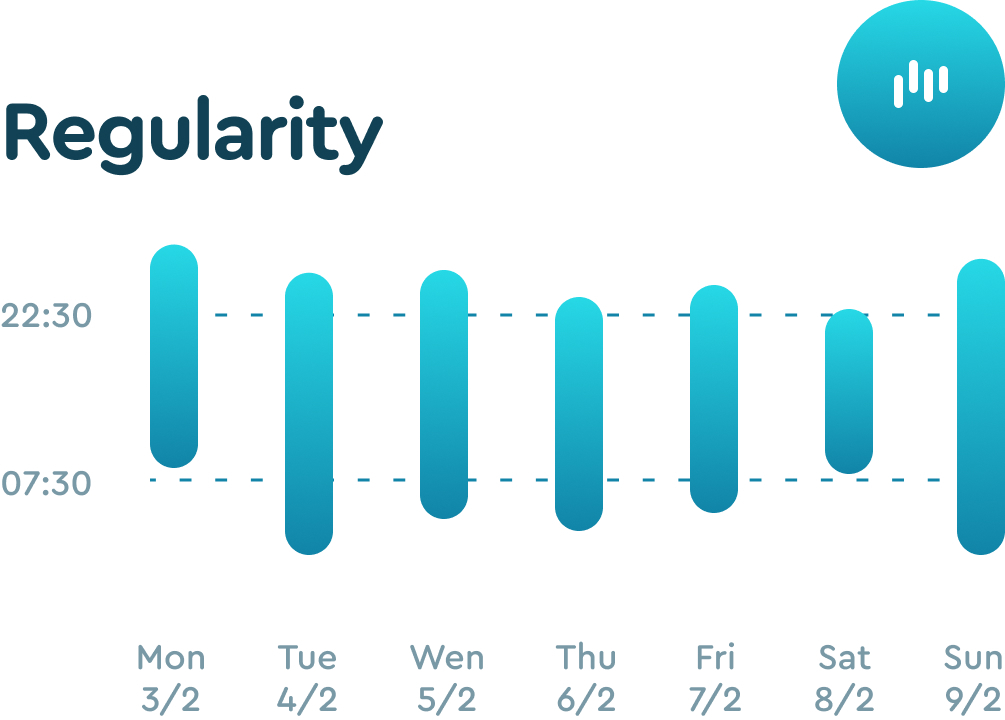
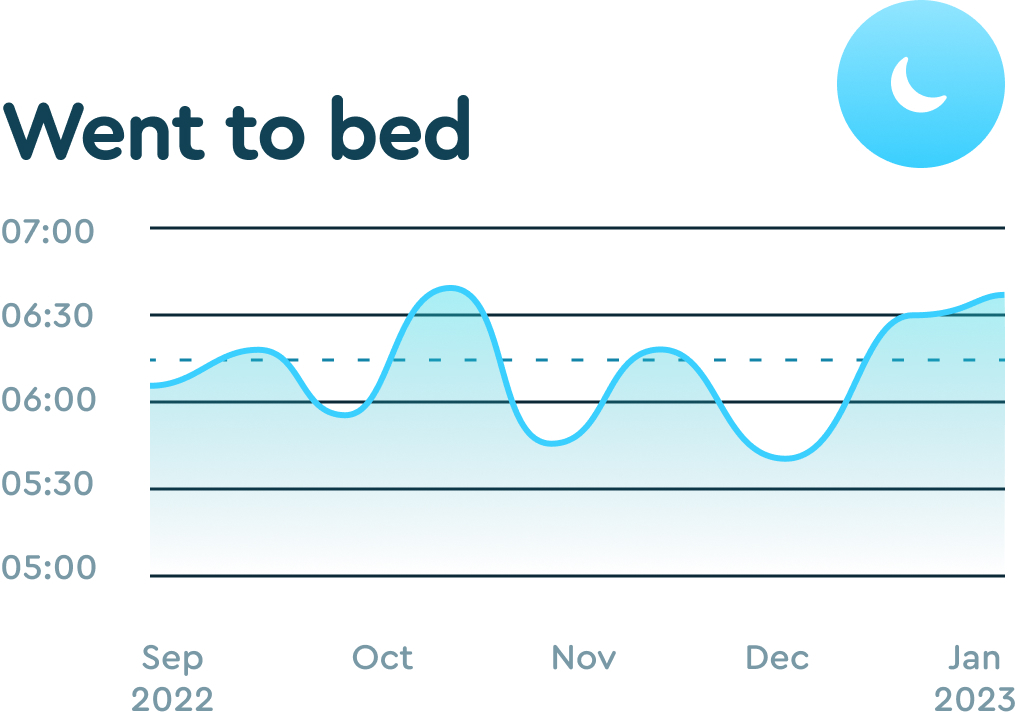
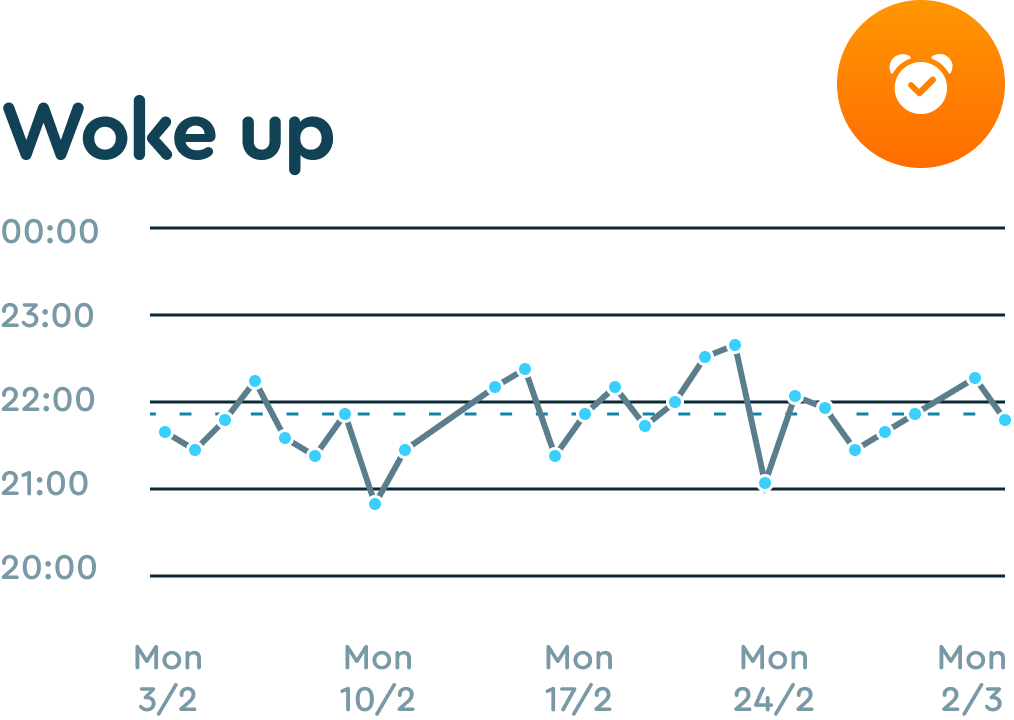
Regularity tells you about your bedtimes and wake up times over a period of time. The higher it is, the more regular your bedtime (indicated by the metric, ‘went to bed’) and wake up time (indicated by ‘woke up’.) Aiming for higher regularity will lead to better sleep over time. However, find a bedtime and wake-up time that works for you according to your sleep chronotype, not an idea of when you think you should be going to sleep and waking up in the morning.
Time in bed

This metric is helpful in combination with the metric “Asleep” as time in bed on its own doesn’t necessarily mean you’re getting restful shuteye.
Asleep after
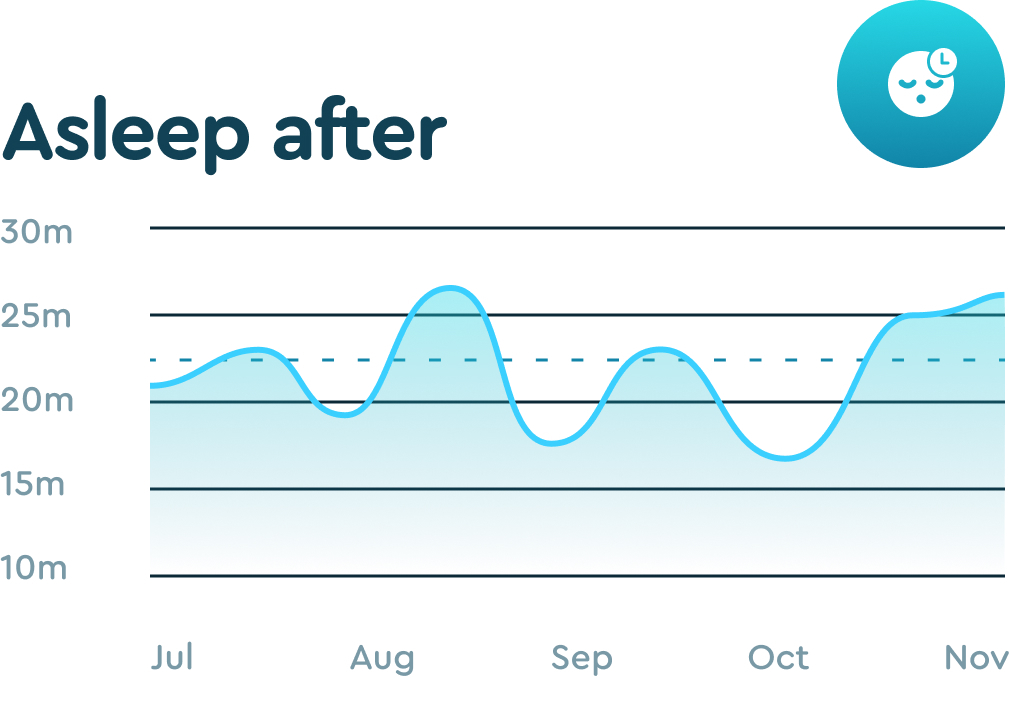
If it takes you a long time to fall asleep, you need to evaluate what works and what doesn’t in your bedtime routine, to help you nod off with ease.
Asleep
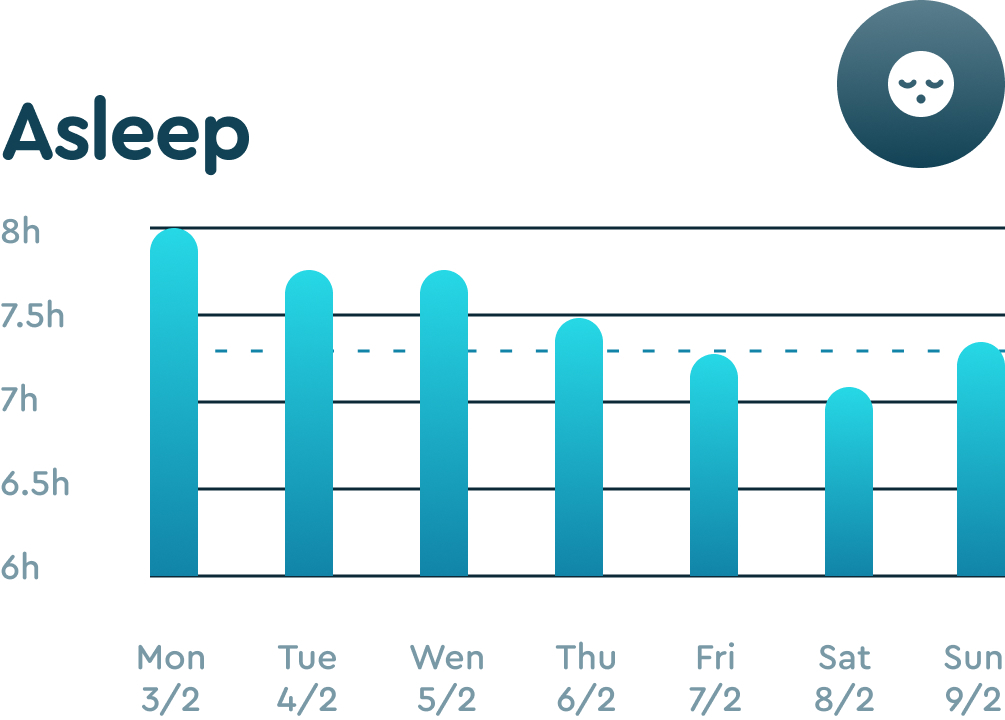
It gives the time that you’re actually sleeping. If there is a consistent gap between time in bed and time asleep, your sleep efficiency may not be optimal, meaning it takes too long to fall asleep or you have multiple awakenings per night.
Snore
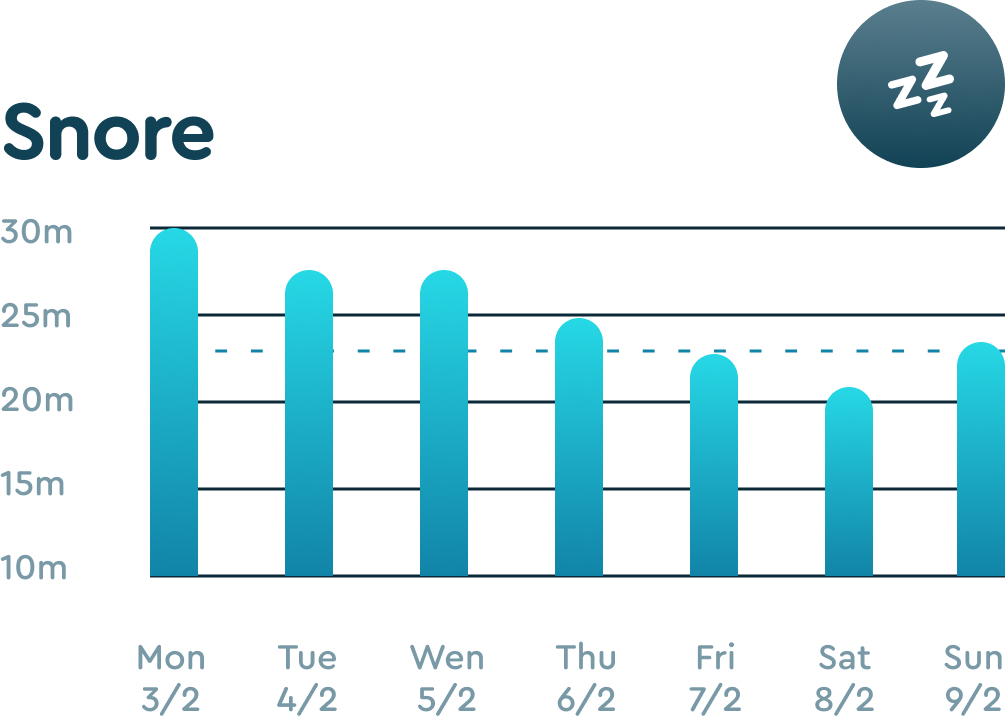
Snoring is linked to a range of different conditions, including heart disease, high blood pressure, diabetes and more, so keeping a close eye on your snoring minutes and other potential sleep sounds, such as shortness of breath as a result of snoring, is important.
Heart Rate
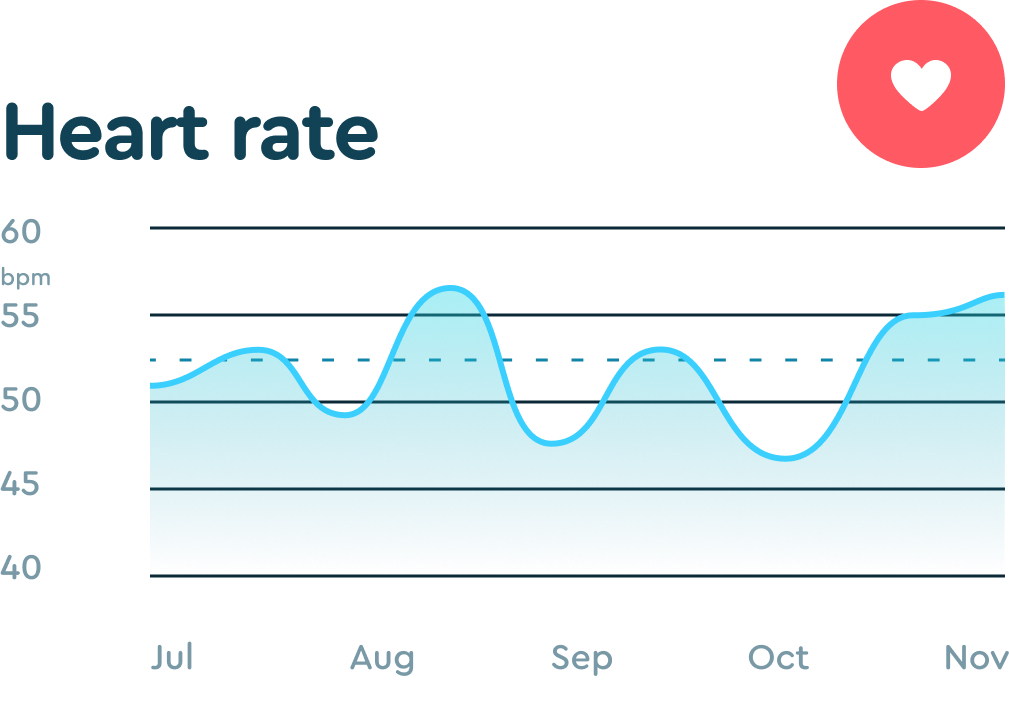
This is yet another useful metric as a particularly high or low heart rate during sleep, especially at irregular intervals, is also something to share with your physicians.
Steps
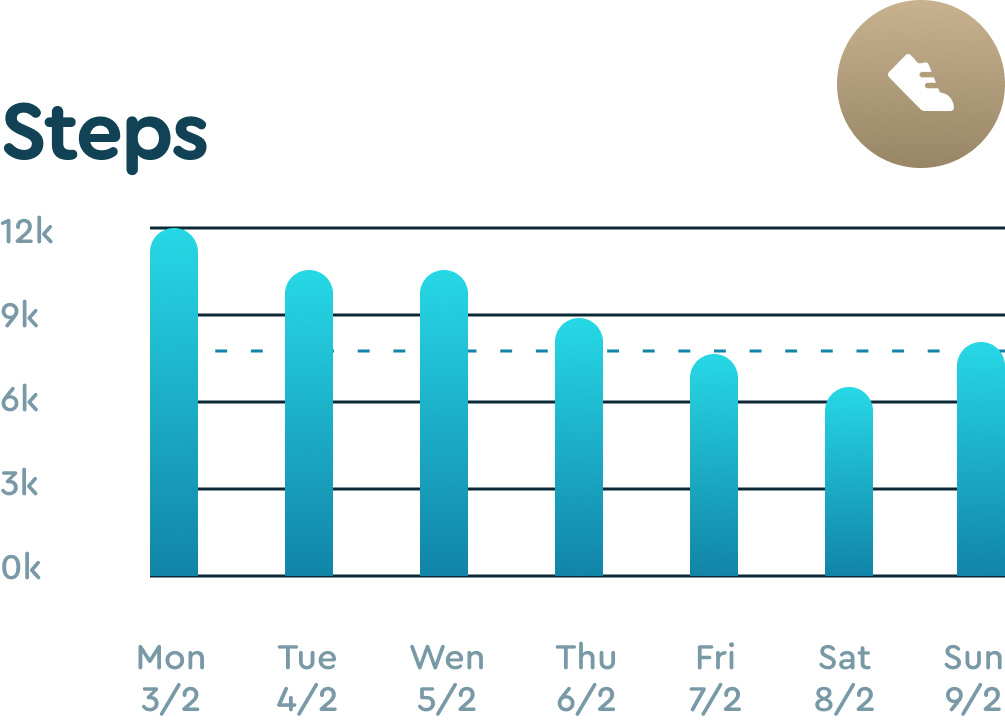
Your daytime habits have a profound impact on your sleep. In your statistics, you can view the direct correlation between your sleep quality and steps taken.
Our Sleep Experts’ favorite sleep stats
Sleep Cycle’s Head of Sleep Science, Mike Gradisar, and Sleep Expert, Li Åslund, mention the following statistics as extra important to them.
Mike: “ ‘Regularity’ is at the heart of a number of powerful sleep techniques. It’s probably one of the most important statistics for people to focus on and improve – by having more consistent bedtime and wake time. Remember – it doesn’t have to be perfect, as many of us like a lie-in on the weekend, but sticking to it as much as you can, will help”.
Li : “ ‘Asleep’ – Keeping track of time spent asleep is a good way to ensure that we consistently get the amount of sleep needed. Forgetting to prioritize sleep can lead to sleep deprivation, which has a negative effect on how we feel and function. ‘Time in Bed’ is another important metric as sometimes we forget that in order to get the amount of sleep we need, we have to make sure the time we actually spend in bed is sufficient”.
How can sleep analysis help me sleep better?
Checking your sleep diary and ‘Statistics’ has the potential to help you improve your sleep by:
- Giving information that can identify any sleep-related conditions, such as potential sleep apnea.
- Analyzing your sleep pattern over time, highlighting not only the time you spend in bed, but also the time actually spent asleep – giving you a better idea of your sleep efficiency.
- Showing how external and internal influencers, such as caffeine, exercise, meals, alcohol, stress- affect your sleep quality over time.
- Snoring and other sleep sounds – many of us are unaware that we snore, let alone that it could be disturbing our sleep. This metric can help you report any discrepancies to a medical professional.
- Tracking your progress on how your bedtime routines are improving your sleep.
With your personal sleep diary and statistics, you can make meaningful lifestyle changes to help your sleep quality and as a result improve your overall health and wellbeing in the long run. So scooch over and make some space for statistics in bed.
Upgrade your sleep with Sleep Cycle
4,7 stars
282 000 ratings (iOS)

50 million
users

Learn more about YOUR sleep stats. Start tracking your sleep tonight.

